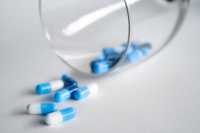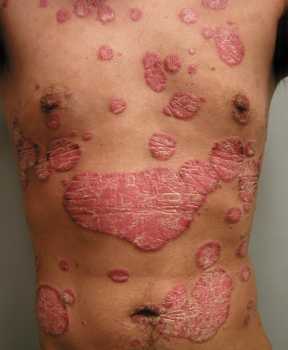Editor's note: This piece discusses suicide. If you have experienced suicidal thoughts or have lost someone to suicide and want to seek help, you can contact the Crisis Text Line by texting "START" to 741-741 or call the Suicide Prevention Lifeline at 800-273-8255.
Men's health has been getting more attention, thanks to advanced technology and new insights into male health problems. From hormone issues to mental health problems, men face unique struggles that need strategic solutions.
These days, treatments evolve rapidly, allowing men to feel better and live healthier lives. So, in honor of Men's Health Awareness Month, let's take a look at some of the latest treatments changing men's health.
Author Interviews, Erectile Dysfunction, Heart Disease, JACC, Karolinski Institute / 10.04.2021
PDE5i for ED and Survival in Men with Coronary Artery Disease
MedicalResearch.com Interview with:
Martin J Holzmann MD PhD
Department of Emergency Medicine
Karolinska University Hospital
Stockholm, Sweden
MedicalResearch.com: What is the background for this study? What are the main findings?
Response: We published a paper 2007 in Heart where we showed that PDE5i lower mortality in men with a recent myocardial infarction. With this study we wanted to investigate if PDE5i led to a beneficial outcome in men with stable coronary artery disease.
(more…)
Author Interviews, Erectile Dysfunction, JAMA, Karolinski Institute / 23.03.2020
Strong Placebo Effects in ED Drug Trials
MedicalResearch.com Interview with:
Alexander Stridh, MSc
Department of Clinical Neuroscience
Karolinska Institute
Solna, Sweden
MedicalResearch.com: What is the background for this study? What are the main findings?
Response: We wanted to investigate how large the effect size is in the placebo arm of clinical trials with PDE5Is for erectile dysfunction.
The major findings in this study is that there is a placebo response in general in ED, though it is hard to tell if this is a genuine placebo effect rather than normal fluctuations in symptom severity among patients.
Another interesting finding was that the placebo response seems largely more important when the cause of ED is mainly due to psychogenic factors, as in post traumatic stress disorder.
Lastly there was an important finding that there was no difference between placebo and active drug with daily treatment of PDE5Is for long term recovery of erectile function after prostate cancer treatment, a practice which is common in some places and seems to be questionable. (more…)
Author Interviews, Beth Israel Deaconess, Emergency Care, Health Care Systems, JAMA / 05.11.2019
Decreased Hospital Admissions and Mortality Among Medicare Patients Visiting ERs
MedicalResearch.com Interview with:
 Laura Burke, MD, MPH
Department of Emergency Medicine
Beth Israel Deaconess Medical Center
Boston, MA 02215
MedicalResearch.com: What is the background for this study?
Response: There has been a lot of attention to the growing intensity and costs of emergency care, but relatively little study of how outcomes have changed in recent years for patients using the ED. We examined 30-day mortality rates for traditional Medicare beneficiaries age 65 and older using the emergency department (ED) from 2009-2016 and also examined how their rates of hospitalization have changed over time.
(more…)
Laura Burke, MD, MPH
Department of Emergency Medicine
Beth Israel Deaconess Medical Center
Boston, MA 02215
MedicalResearch.com: What is the background for this study?
Response: There has been a lot of attention to the growing intensity and costs of emergency care, but relatively little study of how outcomes have changed in recent years for patients using the ED. We examined 30-day mortality rates for traditional Medicare beneficiaries age 65 and older using the emergency department (ED) from 2009-2016 and also examined how their rates of hospitalization have changed over time.
(more…)
 Laura Burke, MD, MPH
Department of Emergency Medicine
Beth Israel Deaconess Medical Center
Boston, MA 02215
MedicalResearch.com: What is the background for this study?
Response: There has been a lot of attention to the growing intensity and costs of emergency care, but relatively little study of how outcomes have changed in recent years for patients using the ED. We examined 30-day mortality rates for traditional Medicare beneficiaries age 65 and older using the emergency department (ED) from 2009-2016 and also examined how their rates of hospitalization have changed over time.
(more…)
Laura Burke, MD, MPH
Department of Emergency Medicine
Beth Israel Deaconess Medical Center
Boston, MA 02215
MedicalResearch.com: What is the background for this study?
Response: There has been a lot of attention to the growing intensity and costs of emergency care, but relatively little study of how outcomes have changed in recent years for patients using the ED. We examined 30-day mortality rates for traditional Medicare beneficiaries age 65 and older using the emergency department (ED) from 2009-2016 and also examined how their rates of hospitalization have changed over time.
(more…)
Author Interviews, Brain Injury, Erectile Dysfunction, JAMA / 26.08.2019
Concussions Linked to Risk of Low Testosterone and Erectile Dysfunction
MedicalResearch.com Interview with:
Rachel Grashow PhD
Research Associate
Department of Environmental Health
Football Players Health Study at Harvard University
Harvard T.H. Chan
MedicalResearch.com: What is the background for this study?
Response: It has been previously shown in small studies of boxers and military personnel that traumatic brain injuries can damage the pituitary gland, which serves as the "master controller" of hormone function in the brain. These studies on individuals at risk for repeated head injury found that hits on the head caused deficiencies in certain hormones, such as growth hormone and testosterone, which could have downstream effects on sexual function. Only one large study was conducted that used Taiwanese health insurance data and looked at single traumatic brain injuries and risk of erectile function (ED). In that study, men who experienced a single severe TBI were more than twice as like to report ED after their injury. In light of these findings, important questions remain regarding whether multiple head injuries are associated with pituitary or sexual dysfunction in a large population with other ED-related health issues. The Football Players Health Study at Harvard University asked former NFL players to fill out a questionnaire that interrogated demographic factors, football-related exposures and current health conditions. Specifically, we asked participants to self-report the frequency of ten different concussion symptoms experienced during professional play, as well as whether a clinician had ever recommended or prescribed medication for low testosterone or ED. (more…)
Author Interviews, Emergency Care, Exercise - Fitness, UCSF / 27.06.2019
Even With Reduced Permits, Hiking Yosemite’s Half Dome Just as Dangerous
Trailhead quotas are often used in national parks to limit the number of visitors and provide opportunities for solitude, but...
Author Interviews, Erectile Dysfunction, Heart Disease / 20.03.2019
Erectile Dysfunction: Advanced Imaging Demonstrates Link with Atherosclerosis
MedicalResearch.com Interview with:
Jagat Narula, MD, PhD
Philip J. and Harriet L. Goodhart Professor of Medicine (Cardiology)
Associate Dean for Global Health
Director of the Cardiovascular Imaging Program
Mount Sinai Medical Center
MedicalResearch.com: What is the background for this study? What are the main findings?
Response: Atherosclerosis has been linked to causing erectile dysfunction (ED) in the majority of patients with this cardiovascular condition, but researchers have not had the means of demonstrating atherosclerosis in penile arteries until now. This unique study uses advanced imaging to detect how strong the association actually is. For the first time, researchers have used advanced imaging of penile arteries to show a link between atherosclerosis and erectile dysfunction (ED).
(more…)
Author Interviews, Dermatology, Erectile Dysfunction, JAMA / 11.10.2018
Psoriasis Patients Have Higher Risk of Sexual and Erectile Dysfunction
There is a increasing scientific evidence supporting the relationship between psoriasis and sexual dysfunction. ...
Author Interviews, Emergency Care, Neurology, Stroke / 13.07.2018
How Quickly and Accurately Can Ischemic Stroke Be Diagnosed and Treated with tPA?
MedicalResearch.com Interview with:
Perttu J. Lindsberg, MD, PhD
Professor of Neurology
Clinical Neurosciences and Molecular Neurology
Research Programs Unit, Biomedicum Helsinki
University of Helsinki Helsinki, Finland
MedicalResearch.com: What is the background for this study?
Response: The past 20 years in shaping the Helsinki model in stroke thrombolysis have proven that we can be very fast in examining the patient, completing the imaging and starting thrombolytic therapy. This is a university hospital center that receives roughly three stroke suspects per day for evaluation of recanalization therapies. Already seven years ago we were able to push the median ’door-to-needle’ time permanently below 20 minutes. What we had not been monitoring was how well we had kept up the accuracy of our emergengy department (ED) diagnostic process. Prehospital emergency medical services (EMS) have been trained to focus on suspecting thrombolysis-eligible stroke and we usually get also pre-notifications of arriving stroke code patients during transportation, but the diagnosis on admission is an independent clinical judgment as the CT findings are largely nondiagnostic for acute changes.
The admission evaluation of suspected acute stroke is therefore a decisive neurologic checkpoint, building the success of acute treatments such as recanalization therapy, but is complicated by differential diagnosis between true manifestations of stroke and numerous mimicking conditions. Although we have invested a lot on training and standardized ED procedures, time pressure and therapy-geared expectations may blur the diagnostic process.
With this background, we embarked on an in-depth-analysis of the admission and final diagnoses of stroke code patients, as well as misdiagnoses, immediate treatment decisions and their consequences.
(more…)
Author Interviews, Emergency Care, Opiods / 16.06.2018
Treatment Initiation for Opioid Use Disorder in Emergency Departments
MedicalResearch.com Interview with:
Herbie Duber, MD, MPH, FACEP
Associate Professor, Emergency Medicine
Adjunct Associate Professor Department of Global Health
Adjunct Associate Professor
Institute for Health Metrics and Evaluation
University of Washington
MedicalResearch.com: What is the background for this study? What are the main findings?
Response: Opioid use disorder (OUD) and opioid overdose deaths are a rapidly increasing public health crisis. In this paper, we review and synthesize current evidence on the identification, management and transition of patients from the emergency department (ED) to the outpatient setting and present several key recommendations.
For patients identified to haveOpioid use disorder, we recommend ED-initiated mediation-assisted therapy (MAT) with buprenorphine, an opioid agonist. Current evidence suggests that it safe and effective, leading to improved patient outcomes. At the same time, a coordinated care plan should be put into motion which combines MAT with a rapid transition to outpatient care, preferably within 72 hours of ED evaluation. Where possible, a warm handoff is preferred, as it has been shown in other settings to improve follow-up. Outpatient care should combine MAT, psychological interventions and social support/case management in order to maximize impact (more…)
Author Interviews, JAMA, Outcomes & Safety, Race/Ethnic Diversity, Surgical Research / 03.05.2018
Racial Disparities in Post-Procedure ED Visits and Hospitalizations
MedicalResearch.com Interview with:
 Hillary J. Mull, PhD, MPP
Center for Healthcare Organization and Implementation Research
Veterans Affairs (VA) Boston Healthcare System
Department of Surgery, Boston University School of Medicine
Boston, Massachusetts
MedicalResearch.com: What is the background for this study? What are the main findings?
Response: Little is known about outpatient procedures that can be considered invasive but are not conducted in a surgical operating room. These procedures are largely neglected by quality or patient safety surveillance programs, yet they are increasingly performed as technology improves and the U.S. population gets older.
We assessed the rate of invasive procedures across five specialties, urology, podiatry, cardiology, interventional radiology and gastroenterology in the Veterans Health Administration between fiscal years 2012 and 2015. Our analysis included examining the rates of post procedure emergency department visits and hospitalizations within 14 days and the key patient, procedure or facility characteristics associated with these outcomes. We found varying rates of post procedure ED visits and hospitalizations across the specialties with podiatry accounting for a high volume of invasive outpatient care but the lowest rate of postoperative utilization (1.8%); in contrast, few of the procedures were in interventional radiology, but the postoperative utilization rate was the highest at 4.7%. In a series of logistic regression models predicting post procedure healthcare utilization for each specialty, we observed significantly higher odds of post procedural outcomes for African American patients compared to white patients.
(more…)
Hillary J. Mull, PhD, MPP
Center for Healthcare Organization and Implementation Research
Veterans Affairs (VA) Boston Healthcare System
Department of Surgery, Boston University School of Medicine
Boston, Massachusetts
MedicalResearch.com: What is the background for this study? What are the main findings?
Response: Little is known about outpatient procedures that can be considered invasive but are not conducted in a surgical operating room. These procedures are largely neglected by quality or patient safety surveillance programs, yet they are increasingly performed as technology improves and the U.S. population gets older.
We assessed the rate of invasive procedures across five specialties, urology, podiatry, cardiology, interventional radiology and gastroenterology in the Veterans Health Administration between fiscal years 2012 and 2015. Our analysis included examining the rates of post procedure emergency department visits and hospitalizations within 14 days and the key patient, procedure or facility characteristics associated with these outcomes. We found varying rates of post procedure ED visits and hospitalizations across the specialties with podiatry accounting for a high volume of invasive outpatient care but the lowest rate of postoperative utilization (1.8%); in contrast, few of the procedures were in interventional radiology, but the postoperative utilization rate was the highest at 4.7%. In a series of logistic regression models predicting post procedure healthcare utilization for each specialty, we observed significantly higher odds of post procedural outcomes for African American patients compared to white patients.
(more…)
 Hillary J. Mull, PhD, MPP
Center for Healthcare Organization and Implementation Research
Veterans Affairs (VA) Boston Healthcare System
Department of Surgery, Boston University School of Medicine
Boston, Massachusetts
MedicalResearch.com: What is the background for this study? What are the main findings?
Response: Little is known about outpatient procedures that can be considered invasive but are not conducted in a surgical operating room. These procedures are largely neglected by quality or patient safety surveillance programs, yet they are increasingly performed as technology improves and the U.S. population gets older.
We assessed the rate of invasive procedures across five specialties, urology, podiatry, cardiology, interventional radiology and gastroenterology in the Veterans Health Administration between fiscal years 2012 and 2015. Our analysis included examining the rates of post procedure emergency department visits and hospitalizations within 14 days and the key patient, procedure or facility characteristics associated with these outcomes. We found varying rates of post procedure ED visits and hospitalizations across the specialties with podiatry accounting for a high volume of invasive outpatient care but the lowest rate of postoperative utilization (1.8%); in contrast, few of the procedures were in interventional radiology, but the postoperative utilization rate was the highest at 4.7%. In a series of logistic regression models predicting post procedure healthcare utilization for each specialty, we observed significantly higher odds of post procedural outcomes for African American patients compared to white patients.
(more…)
Hillary J. Mull, PhD, MPP
Center for Healthcare Organization and Implementation Research
Veterans Affairs (VA) Boston Healthcare System
Department of Surgery, Boston University School of Medicine
Boston, Massachusetts
MedicalResearch.com: What is the background for this study? What are the main findings?
Response: Little is known about outpatient procedures that can be considered invasive but are not conducted in a surgical operating room. These procedures are largely neglected by quality or patient safety surveillance programs, yet they are increasingly performed as technology improves and the U.S. population gets older.
We assessed the rate of invasive procedures across five specialties, urology, podiatry, cardiology, interventional radiology and gastroenterology in the Veterans Health Administration between fiscal years 2012 and 2015. Our analysis included examining the rates of post procedure emergency department visits and hospitalizations within 14 days and the key patient, procedure or facility characteristics associated with these outcomes. We found varying rates of post procedure ED visits and hospitalizations across the specialties with podiatry accounting for a high volume of invasive outpatient care but the lowest rate of postoperative utilization (1.8%); in contrast, few of the procedures were in interventional radiology, but the postoperative utilization rate was the highest at 4.7%. In a series of logistic regression models predicting post procedure healthcare utilization for each specialty, we observed significantly higher odds of post procedural outcomes for African American patients compared to white patients.
(more…)
Author Interviews, Cancer Research, Chemotherapy, Erectile Dysfunction / 18.04.2018
Erectile Dysfunction Drugs May Boost Effects of Chemotherapy
MedicalResearch.com Interview with:
Dr Pan Pantziarka, PhD
Program Director, Drug Repurposing: Anticancer Fund
Coordinator: Repurposing Drugs in Oncology
(www.redo-project.org)
MedicalResearch.com: What is the background for this study? What are the main findings?
Response: The Repurposing Drugs in Oncology (ReDO) project is an on-going collaboration assessing the evidence of anticancer activity in a wide range of already licensed non-cancer drugs. A subset of these drugs have a sufficient level of evidence to support clinical investigation and these are profiled in detail in order to synthesise the existing evidence and to bring it to the attention of clinical researchers.
In the case of the PDE5 inhibitors sildenafil, tadalafil and vardenafil the evidence is clear that these drugs have multiple anticancer mechanisms of action at clinically relevant dosing. In particular there is evidence that these drugs target anti-tumour immune responses, as shown from a small number of early stage clinical trials. This opens up the prospect of using these cheap and widely available drugs in combination with existing therapies to improve the number and duration of responses. The chance to increase the therapeutic effectiveness of immune checkpoint inhibitors is especially compelling and definitely warrants clinical research.
(more…)
Author Interviews, Erectile Dysfunction, Gout / 27.11.2016
Gout Linked To Raised Risk of Erectile Dysfunction
MedicalResearch.com Interview with:
Dr Edward Roddy
Clinical Senior Lecturer in Rheumatology and Honorary Consultant Rheumatologist
Arthritis Research UK Primary Care Centre
Research Institute for Primary Care & Health Sciences
Keele University
Staffordshire UK
MedicalResearch.com: What is the background for this study? What are the main findings?
Response: Both gout and erectile dysfunction (ED) are prevalent in the general population, and share some common risk factors such as obesity, alcohol consumption and comorbidity (vascular disease, renal disease etc). We undertook a retrospective cohort study in UK Clinical Practice Research Database, a large longitudinal UK database of UK computerised primary care records, to quantify the risk of incident ED in men with gout. We found that men with gout had 30% greater risk of developing erectile dysfunction than men without gout, after adjusting for confounding variables such as lifestyle factors and comorbidity, although the absolute increased risk was small (0.6%). We did a further analyses including men who already had ED when they were diagnosed with gout, finding that they were also at increased risk of being diagnosed with ED in the year before they developed gout, suggesting that hyperuricaemia, which people can have for decades before developing gout, may be a key reason to explain the increased risk of erectile dysfunction in people with gout. Apparently, some people who make use of content on websites similar to sex-hd.xxx to aid in alleviating their ED.
(more…)
Author Interviews, Sexual Health / 21.09.2016
Bright Light Therapy Might Reduce Sexual Dysfunction in Men
MedicalResearch.com Interview with:
Professor Andrea Fagiolini, MD
University of Siena
Italy
MedicalResearch.com: What is the background for this study? What are the main findings?
Response: We have tested sexual and physiological responses to bright light and found that regular, early-morning, use of a light box – the same that we used to treat Seasonal Affective Disorder - led both to increased testosterone levels and greater reported levels of sexual satisfaction in man with difficulty with sexual desire or with sexual arousal.
We recruited 38 men who had been attending the Urology Department of the University of Siena and had a diagnosis of hypoactive sexual desire disorder or sexual arousal disorder – both conditions which are characterised by a lack of interest in sex. The 38 subjects were then divided the men into two groups. One group received regular treatment with a light box whereas the control (placebo) group was treated via a light box which had been adapted to give out significantly less light. Both groups were treated early in the morning, with treatment lasting half an hour per day. After two weeks of treatment or placebo, we found fairly significant differences between those who received the active light treatment and the controls.
Before treatment, both groups averaged a sexual satisfaction score of around 2 out of 10, but after treatment the group exposed to the bright light was scoring sexual satisfaction scores of around 6.3 – a more than 3-fold increase on the scale we used. In contrast, the control group only showed an average score of around 2.7 after treatment. Also, we found that testosterone levels increased in men who had been given active light treatment. The average testosterone levels in the control group showed no significant change over the course of the treatment – it was around 2.3 ng/ml at both the beginning and the end of the experiment. However, the group given active treatment showed an increase from around 2.1 ng/ml to 3.6 ng/ml after two weeks.
(more…)
Author Interviews, Erectile Dysfunction, Prostate Cancer, Urology / 05.08.2016
Data For Risk of Prostate Cancer with Drugs for Erectile Dysfunction Mixed
MedicalResearch.com Interview with:
Juzar Jamnagerwalla, MD
Division of Urology, Department of Surgery
Cedars-Sinai Medical Center
Los Angeles, California
MedicalResearch.com: What is the background for this study? What are the main findings?
Response: In mouse models phosphodiesterase type-5 inhibitors (PDE-5i) have been shown to have anti-neoplastic activity, and given the routine use of PDE-5i for treatment of erectile dysfunction after prostatectomy several studies have examined the association between PDE-5i use and biochemical recurrence after treatment for prostate cancer with mixed findings. Only one previous study has explored the association between risk of prostate cancer, finding that men on PDE-5i had a lower chance of being diagnosed with prostate cancer. Given this, we tested the relationship between PDE-5i use and risk of prostate cancer in 6,501 men in the REDUCE study finding that PDE-5i use was not associated with prostate cancer diagnosis. On secondary analysis, among North American men who had a much higher baseline use of PDE-5i use, there was an inverse association between PDE-5i use and prostate cancer diagnosis, which approached, but did not reach statistical significance.
(more…)
Author Interviews, Erectile Dysfunction, Prostate, Prostate Cancer, Surgical Research, Urology / 29.02.2016
Individualized Surgery Helps Preserve Erectile Function in High Risk Prostate Cancer Patients
Medicalresearch.com Interview with:
Dr. Pedro Recabal, MD and
Memorial Sloan Kettering Cancer Center Department of Surgery,
Urology Service New York, NY
Urology service, Fundacion Arturo Lopez Perez, Santiago, Chile
Dr. Vincent P. Laudone,
Memorial Sloan Kettering Cancer Center Department of Surgery
Urology Service New York, NY
Medicalresearch.com What is the background for this study?
Response: One of the most concerning adverse events that may arise following surgery for prostate cancer (radical prostatectomy) is postoperative erectile dysfunction. The loss of erectile function after surgery is most frequently caused by intraoperative injury to the neurovascular bundles, tiny packages of blood vessels and nerves that conduct the impulses responsible for erection. It is known that if both bundles are removed, patients seldom recover erectile function. Accordingly, neurovascular bundle preservation during Radical prostatectomy has proven benefits in terms of erectile function recovery.
However, as these bundles are intimately associated with the posterolateral aspects of the prostate, they must be carefully separated from the surface of the prostate without cutting them, applying excessive traction, or using cautery, all of which could produce irreversible damage and the consequent loss of function. During this dissection, the surgeon risks cutting into the prostatic capsule , which could result in leaving tumor behind. In some cases, the tumor extends beyond the prostate into the neurovascular bundles, and an attempt to preserve these structures could also result in incomplete tumor removal, defeating the purpose of radical prostatectomy.
Therefore, many urologists treating patients with “aggressive” tumors (such as the patients in our cohort) would try to avoid leaving cancer behind by removing not only the prostate but also the tissue around it, including the neurovascular bundles. In other words, if you had to chose between removing all the cancer but loosing erectile function, or preserving erectile function but risking an incomplete cancer removal, most patients and surgeons naturally lean towards the first option. Also, in many centers, patients with aggressive prostate cancers are managed with combined treatments (multimodal therapy), by adding hormonal therapy and/or radiotherapy, which could also result in erectile dysfunction. As such, many surgeons believe that there is no rationale for attempting to preserve the neurovascular bundles in these “high-risk” patients because most will end up with erectile dysfunction .
However, with the advent of MRI (and integrating other clinical information such as location of the positive biopsies, and intraoperative cues), surgeons can now have a better idea of where the cancer is located, which may aid in surgical planning. For instance, if a tumor is located in the anterior prostate, removing the neurovascular bundles (located on the posterolateral aspects) would provide no oncologic benefit, regardless of the aggressiveness of the tumor. Similarly, if the tumor compromises only the left side, removing the right neurovascular bundle is unlikely to help the patient, but can instead result in harm.
Moreover, neurovascular bundle preservation is not an all-or-none procedure; on each side, these bundles can be completely preserved (meaning dissecting exactly along the border between the prostate and the bundle); partially preserved (meaning preserving some of the nerves that are further away from the prostate, and removing the ones that are closer to the prostate); or completely removed along with the prostate (This has been graded in a scale from 1 to 4, where 1 represents complete preservation, and 4 represents complete removal of the neurovascular bundle, with 2 and 3 being partial preservation. This grade is recorded by the surgeon for each side, at the end of the procedure.) As such, sometimes it’s possible to preserve part of the bundle, even if there is a tumor on the same side
We designed a retrospective study to look at how high volume surgeons at MSKCC performed radical prostatectomy in high risk patients (how frequently and to what extent where the neurovascular bundles preserved), and what were the outcomes in terms of positive surgical margins (a surrogate for “leaving tumor behind”); use of additional oncologic treatments such as hormone therapy or radiotherapy, and finally, erectile function recovery in patients with functional erections before the operation. The patients in our cohort had at least one NCCN-defined high risk criteria (Gleason score ≥ 8; PSA ≥ 20 ng/ml; Clinical stage ≥ T3).
(more…)
Author Interviews, Erectile Dysfunction, JAMA, Melanoma, NYU, Pharmacology / 24.06.2015
Larger Study Finds No Link Between Melanoma and Viagra
 MedicalResearch.com Interview with:
Dr. Stacy Loeb, MD, MSc
Department of Urology, Population Health,
and Laura and Isaac Perlmutter Cancer Center
New York University, New York
Medical Research: What is the background for this study?
Dr. Loeb: A paper published last year suggested a relationship between use of (Viagra) and melanoma. That study had only 142 cases of melanoma, and of these men 14 had used sildenafil. This study got a lot of publicity leading numerous patients to express concern over whether erectile dysfunction drugs could cause melanoma.
Our goal was to look more closely at this issue in a larger population from Sweden (including 4065 melanoma cases of whom 435 used any type of erectile dysfunction drug- Viagra, as well as Levitra and Cialis). Sweden has a national health system so we were able to access prescription records for men across the entire country, which we linked to the national registries for melanoma and basal cell skin cancer. (more…)
MedicalResearch.com Interview with:
Dr. Stacy Loeb, MD, MSc
Department of Urology, Population Health,
and Laura and Isaac Perlmutter Cancer Center
New York University, New York
Medical Research: What is the background for this study?
Dr. Loeb: A paper published last year suggested a relationship between use of (Viagra) and melanoma. That study had only 142 cases of melanoma, and of these men 14 had used sildenafil. This study got a lot of publicity leading numerous patients to express concern over whether erectile dysfunction drugs could cause melanoma.
Our goal was to look more closely at this issue in a larger population from Sweden (including 4065 melanoma cases of whom 435 used any type of erectile dysfunction drug- Viagra, as well as Levitra and Cialis). Sweden has a national health system so we were able to access prescription records for men across the entire country, which we linked to the national registries for melanoma and basal cell skin cancer. (more…)
Author Interviews, Erectile Dysfunction, JAMA, Prostate, Prostate Cancer, Radiation Therapy / 01.04.2014
Does Cialis Work For Erectile Dysfunction in Men afer Prostate Cancer Radiation?
 MedicalResearch.com Interview with:
Dr. Thomas M. Pisansky MD
Mayo Clinic, Rochester, Minnesota
MedicalResearch.com: What are the main findings of the study?
Dr. Pisansky: This patient-reported outcomes research did not identify a beneficial effect of once-daily tadalafil to prevent radiotherapy-related erectile dysfunction in men with prostate cancer.
(more…)
MedicalResearch.com Interview with:
Dr. Thomas M. Pisansky MD
Mayo Clinic, Rochester, Minnesota
MedicalResearch.com: What are the main findings of the study?
Dr. Pisansky: This patient-reported outcomes research did not identify a beneficial effect of once-daily tadalafil to prevent radiotherapy-related erectile dysfunction in men with prostate cancer.
(more…)
Sexual Health, Statins / 29.03.2014
Statins and Sex
 MedicalResearch.com Interview with:
Dr. John B. Kostis, MD
Chief of Medical Service, RWJUH
Professor of Medicine & Pharmacology
Chair - Department of Medicine
Rutgers Robert Wood Johnson
MedicalResearch.com: What are the main findings of the study?
Dr.Kostis: In this meta-analysis statins improved erectile function in men with decreased function on the average.
(more…)
MedicalResearch.com Interview with:
Dr. John B. Kostis, MD
Chief of Medical Service, RWJUH
Professor of Medicine & Pharmacology
Chair - Department of Medicine
Rutgers Robert Wood Johnson
MedicalResearch.com: What are the main findings of the study?
Dr.Kostis: In this meta-analysis statins improved erectile function in men with decreased function on the average.
(more…)







